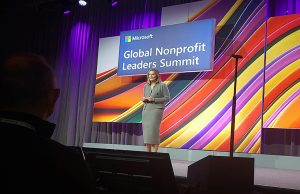Let’s take a little true or false quiz: 1. Fundraising regulators are getting scary… 2. Compliance for general nonprofits is expensive (Form 990 preparation, Sarbanes-Oxley issues for their boards, contract filings, registration, etc.)… 3. Reporting your cost of fundraising is easy…
Not all readers of The NonProfit Times are worried about the above. Religious fundraisers are exempt from a lot of the onerous fundraising regulations. That exemption is a good thing in most cases. Many groups are just too small and lack the resources to comply with some regulations.
They weren’t called to the business of fundraising as their vocation. Their religious leadership took a vow to be true to the ministry of their order, and to take their direction from God.
We have always had a separation of church and state in the United States, but the prevailing winds in Washington, D.C., have changed dramatically in the quest to find more tax revenues. Religious fundraisers make an easy target. The bull’s eye might never be off their backs.
Religious fundraising accounted for 33.4 percent of the $306.39 billion given to charity during 2007, according to Giving USA. It’s a huge part of the pie. In fact, at $102.32 billion for 2007 it was the largest giving segment, according to Giving USA.
So what would happen if religious fundraisers improved some of their business practices now to nurture and retain the trust and confidence of their donors for years to come? Aren’t these the same donors who expect full disclosure of a general nonprofit’s use of funds, on their efficiency, and their overall transfer of funds to the mission they are to fulfill?
Yes, many oversight regulations are onerous, and there is a legitimate reason to worry that the trend is going in the wrong direction. But if you are a religious fundraiser, and you have never voluntarily filed a federal Form 990, maybe you should consider it. Many fundraisers do. They understand this helps meet their donors’ expectations. And, it’s a good business practice in the U.S.
This is an issue because some religious fundraisers in the U.S. have leadership in other parts of the world (i.e., Rome), or they have a leadership team that might have only rotated back into the U.S. recently after serving in missions far and wide. It is not possible for them to have knowledge of what is expected by the U.S. donors of today.
The contracts of general nonprofit organizations are filed in many states. It’s very straightforward to learn which fundraising solicitors and which fundraising counsel work for each organization and what each nonprofit pays for the services. This keeps costs competitive. Religious fundraisers use telemarketing partners, planned giving consultants, capital
ampaign firms and direct response fundraising counsel. They don’t share their information. They’re not required to file, so they really aren’t sure what their peers and like-minded organizations are paying. It’s likely that some disclosure here, through a non-governmental third-party, would actually inform them so they can negotiate for equitable and better rates for the same services.
With secure and simple Internet tools, it would be possible for an exchange where any organization that discloses representative filings is allowed to see the filings of others. Disclosure allows for reciprocal privileges.
This might help a religious organization confidently take the first steps toward disclosing financials to the general public and their donors. If you can’t go that route, at least consider some disclosure of your fundraising results and the impact you’ve had within your ministry on your Web site.
There’s another practical reason for public disclosure. What happens when a religious fundraiser experiences a serious problem with a services partner? There’s no requirement for canceling the non-filed agreement. How does this help other nonprofits, and other religious fundraisers, from being victimized by the same firms using the same practices over and over again?
Forgiveness is a big part of our religious DNA. But where do you draw the line so that the trust you have earned with your donors is preserved going forward? How do you voluntarily adopt some sound and proven business practices used in the general nonprofit community, to be proactive in meeting today’s donors’ expectations? Disclosure and transparency is almost always the best way to let light in. NPT
Jack Doyle is president of Amergent, a direct response fundraising agency in Peabody, Mass. His email is [email protected]












